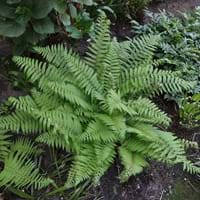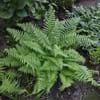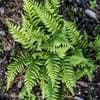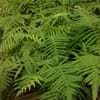Life Span
Perennial
Perennial
Type
Fern
Flowering Plants, Shrubs
Origin
Europe, Eastern Europe, Southern Europe, Western Europe, Turkey
Africa, America, Asia
Types
Not Available
Lockinch, Petite Indigo, White Profusion
Number of Varieties
Not Available
Habitat
Shady Edge, Woodland Garden Dappled Shade
Along Railroads, River side, Roadsides
USDA Hardiness Zone
6-9
5-10
Sunset Zone
4, 5, 6, 7, 8, 9, 14, 15, 16, 17, 18, 19, 20, 21, 22, 23, 24
H1, 2a, 2b, 3a, 3b, 4, 5, 6, 7, 8, 9, 10, 11, 12, 13, 14, 15, 16, 17, 18, 19, 20, 21, 22, 23, 24
Habit
Clump-Forming
Arching/Fountain-shaped
Flower Color
Not Available
Blue, Pink, Purple, Red, White
Flower Color Modifier
Bicolor
Not Available
Fruit Color
Not Available
Not Available
Leaf Color in Spring
Green
Gray Green
Leaf Color in Summer
Dark Green
Gray Green, Light Green
Leaf Color in Fall
Dark Green
Gray Green, Light Green, Yellow green
Leaf Color in Winter
Dark Green
Not Available
Leaf Shape
Saw-tooth like
Egg-shaped
Plant Season
Spring, Summer, Fall, Winter
Fall, Spring, Summer, Winter
Sunlight
Full Shade, Partial shade
Full Sun, Part sun, Partial shade
Type of Soil
Clay, Loam
Loamy, Sandy, Well drained
The pH of Soil
Neutral, Alkaline
Neutral, Slightly Acidic, Slightly Alkaline
Soil Drainage
Well drained
Well drained
Bloom Time
All year
Spring
Tolerances
Drought, Dry Conditions, Light Frost, Shade areas, Variety of soil types
Drought, Pollution, Salt, Soil Compaction
Where to Plant?
Ground
Ground, Pot
How to Plant?
Divison, From Rhizomes, Spores
Seedlings, Stem Planting, Transplanting
Plant Maintenance
Medium
Medium
Watering Requirements
when new, water every week
Form a Soil ring to water efficiently, Water Deeply, Water twice a day in the initial period
In Summer
Lots of watering
Lots of watering
In Spring
Moderate
Moderate
In Winter
Average Water
Average Water
Soil pH
Neutral, Alkaline
Neutral, Slightly Acidic, Slightly Alkaline
Soil Type
Clay, Loam
Loamy, Sandy, Well drained
Soil Drainage Capacity
Well drained
Well drained
Sun Exposure
Full Shade, Partial shade
Full Sun, Part sun, Partial shade
Pruning
Remove damaged leaves, Remove dead branches, Remove dead leaves
Cut or pinch the stems, Prune for shortening long shoots, Prune if you want to improve plant shape, Prune ocassionally, Remove damaged leaves, Remove dead or diseased plant parts, Remove deadheads, Remove shoots
Fertilizers
All-Purpose Liquid Fertilizer
All-Purpose Liquid Fertilizer
Pests and Diseases
Red blotch
Downy mildew, Leaf spot, Spider mites
Plant Tolerance
Drought
Drought
Flower Petal Number
Single
Single
Foliage Texture
Fine
Medium
Foliage Sheen
Glossy
Matte
Invasive
Not Available
Sometimes
Attracts
Birds, Butterflies, Hummingbirds
Butterflies, Hummingbirds
Allergy
Not Available
Vomiting
Aesthetic Uses
Cottage Garden, Showy Purposes
Showy Purposes
Beauty Benefits
Good for skin
Not Available
Environmental Uses
Air purification
Air purification
Medicinal Uses
Poultice, Sore throat, Tonsillitis
Not Available
Part of Plant Used
Leaves, Root, Stem
Flowers, Leaves
Other Uses
Used as Ornamental plant, Used for its medicinal properties
Showy Purposes, Used as Ornamental plant
Used As Indoor Plant
No
No
Used As Outdoor Plant
Yes
Yes
Garden Design
Bedding Plant, Container, Feature Plant, Houseplant, Tropical, Water Gardens
Edging, Feature Plant, Foundation
Botanical Name
POLYSTICHUM setiferum
Buddleia davidii
Common Name
Alaska fern
Butterfly Bush, Summer Lilac, Butterflybush
In Hindi
Soft Shield Fern
Butterfly Bush
In German
Grannen-Schildfarn
Schmetterlingsstrauch
In French
Soft Shield Fern
buisson de papillon
In Spanish
Soft Shield Fern
arbusto de las mariposas
In Greek
Soft Shield Fern
Butterfly Μπους
In Portuguese
Soft Shield Fern
arbusto de borboleta
In Polish
Soft Shield Fern
Butterfly Bush
In Latin
Soft Shield Fern
papilio rubo
Phylum
Pteridophyta
Spermatophyta
Class
Filicopsida
Dicotyledonae
Order
Polypodiales
Lamiales
Family
Dryopteridaceae
Scrophulariaceae
Genus
Polystichum
Buddleja
Clade
Not Available
Angiosperms, Asterids, Eudicots
Tribe
Not Available
Not Available
Subfamily
Not Available
Not Available
Number of Species
Not Available
Season and Care of Soft Shield Fern and Butterfly Bush
Season and care of Soft Shield Fern and Butterfly Bush is important to know. While considering everything about Soft Shield Fern and Butterfly Bush Care, growing season is an essential factor. Soft Shield Fern season is Spring, Summer, Fall and Winter and Butterfly Bush season is Spring, Summer, Fall and Winter. The type of soil for Soft Shield Fern is Clay, Loam and for Butterfly Bush is Loamy, Sandy, Well drained while the PH of soil for Soft Shield Fern is Neutral, Alkaline and for Butterfly Bush is Neutral, Slightly Acidic, Slightly Alkaline.
Soft Shield Fern and Butterfly Bush Physical Information
Soft Shield Fern and Butterfly Bush physical information is very important for comparison. Soft Shield Fern height is 90.00 cm and width 60.00 cm whereas Butterfly Bush height is 7.50 cm and width 4.00 cm. The color specification of Soft Shield Fern and Butterfly Bush are as follows:
Soft Shield Fern flower color: Not Available
Soft Shield Fern leaf color: Green
Butterfly Bush flower color: Blue, Pink, Purple, Red and White
- Butterfly Bush leaf color: Gray Green
Care of Soft Shield Fern and Butterfly Bush
Care of Soft Shield Fern and Butterfly Bush include pruning, fertilizers, watering etc. Soft Shield Fern pruning is done Remove damaged leaves, Remove dead branches and Remove dead leaves and Butterfly Bush pruning is done Cut or pinch the stems, Prune for shortening long shoots, Prune if you want to improve plant shape, Prune ocassionally, Remove damaged leaves, Remove dead or diseased plant parts, Remove deadheads and Remove shoots. In summer Soft Shield Fern needs Lots of watering and in winter, it needs Average Water. Whereas, in summer Butterfly Bush needs Lots of watering and in winter, it needs Average Water.





